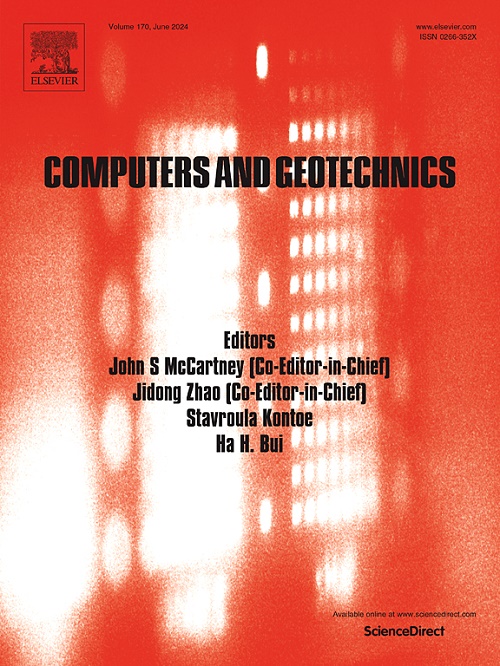Optimizing parameter combinations for clump models enabled by the bubble packing algorithm: Insights from geometrical and morphological approximation of typical geotechnical particles
IF 5.3
1区 工程技术
Q1 COMPUTER SCIENCE, INTERDISCIPLINARY APPLICATIONS
引用次数: 0
Abstract
The bubble packing algorithm has been widely used in previous DEM studies to generate clump models that approximate concave particle shapes. However, the selection of optimal parameters—specifically, the ratio and distance —is often subjective or based solely on volume ratios. This study offers a more comprehensive quantitative analysis by evaluating both the geometrical and morphological accuracy of clump assemblies generated using various combinations of and . The analysis focuses on typical geotechnical particles, including Fujian sand, ballast, and cobble particles. The study establishes correlations for the approximation degrees of each geometrical and morphological parameter and the average number of sub-spheres per clump in relation to and . Using a 5 % threshold for approximation accuracy, the optimal parameter combination of and is identified and verified for each type of particles. The findings of this paper can provide a useful reference for future studies that utilize the bubble packing algorithm to generate clump models for approximating geotechnical particle shapes.
求助全文
约1分钟内获得全文
求助全文
来源期刊

Computers and Geotechnics
地学-地球科学综合
CiteScore
9.10
自引率
15.10%
发文量
438
审稿时长
45 days
期刊介绍:
The use of computers is firmly established in geotechnical engineering and continues to grow rapidly in both engineering practice and academe. The development of advanced numerical techniques and constitutive modeling, in conjunction with rapid developments in computer hardware, enables problems to be tackled that were unthinkable even a few years ago. Computers and Geotechnics provides an up-to-date reference for engineers and researchers engaged in computer aided analysis and research in geotechnical engineering. The journal is intended for an expeditious dissemination of advanced computer applications across a broad range of geotechnical topics. Contributions on advances in numerical algorithms, computer implementation of new constitutive models and probabilistic methods are especially encouraged.
 求助内容:
求助内容: 应助结果提醒方式:
应助结果提醒方式:


